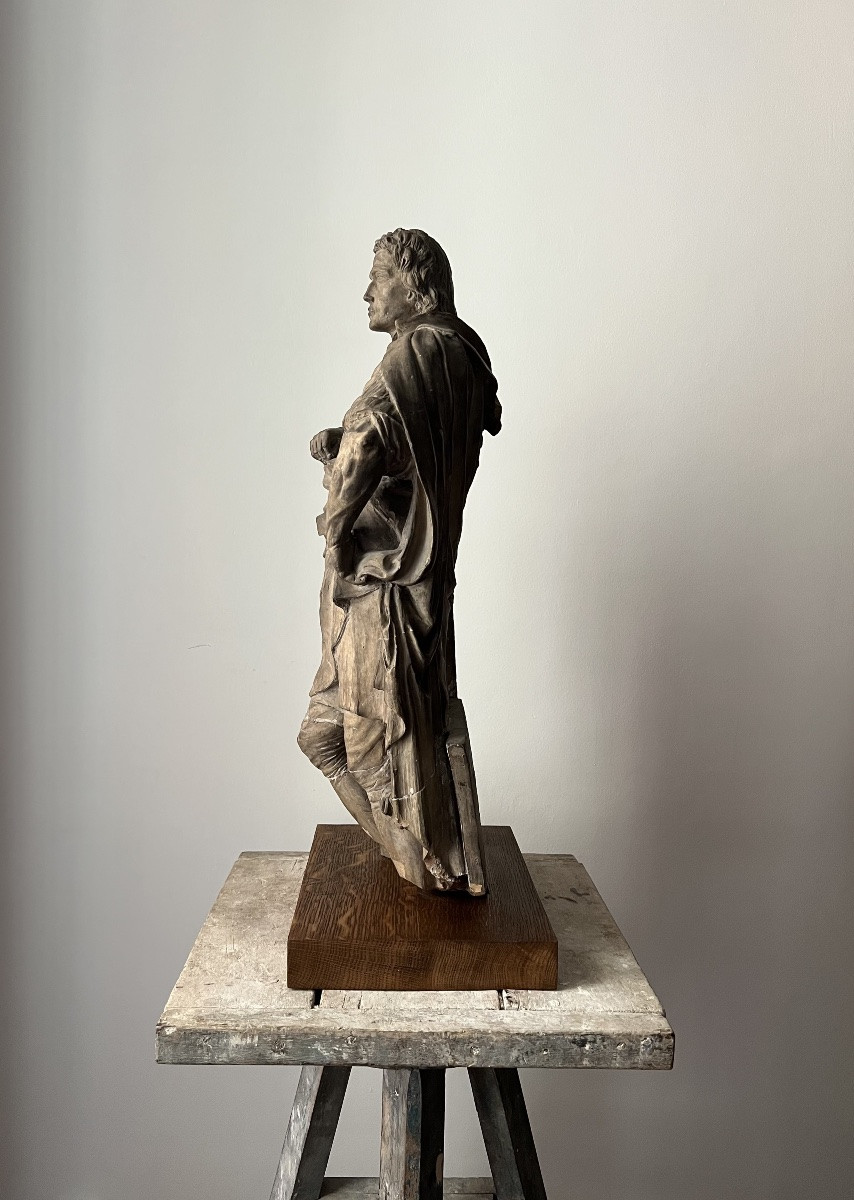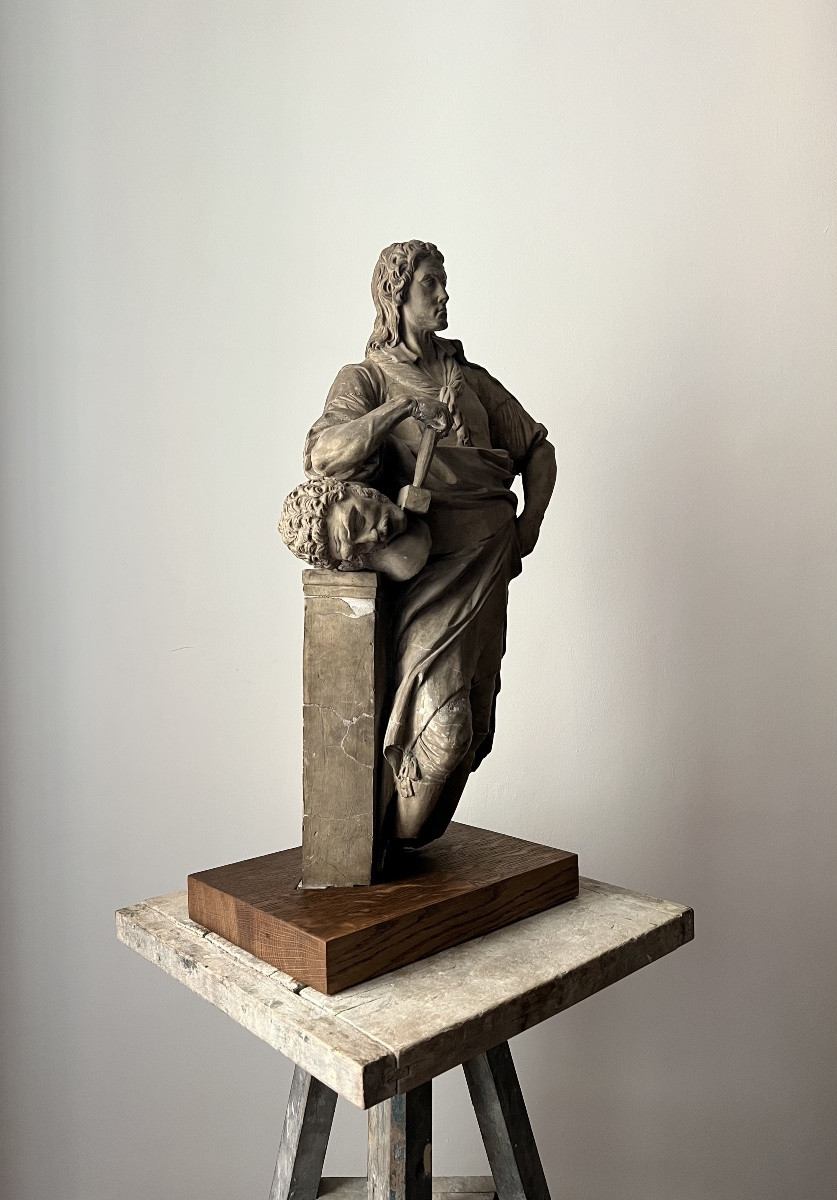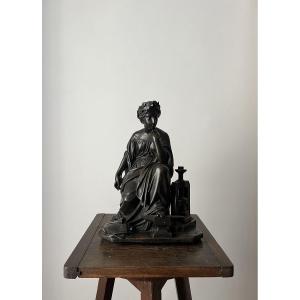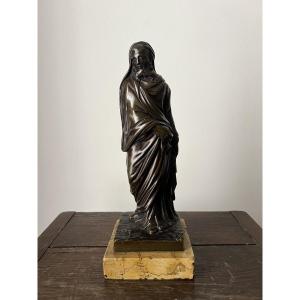Original terracotta
Dated 1834
Inscription on the back: “Vander a[…]; Égide d'Univers; le 25 octobre 1834 à Douai”.
H. 72 cm; base: 25 × 34 cm
Broken in multiple places, old restorations. Missing feet.
Rests on an oak base
Pierre Puget (1620–1694) was a French sculptor, painter and architect, a major figure in Baroque art. Born in Marseille, he first trained as a woodcarver in the arsenals of Toulon, then left for Italy (Genoa, then Rome), where he learned to use a chisel on marble and refined his style, marked by dramatic expression and movement.
Back in France, he produced emblematic works such as Milo of Croton and Perseus and Andromeda, now preserved in the Louvre Museum. Despite tensions with the court of Versailles and Colbert, he worked for Louis XIV and private patrons, imposing a personal style, between force and emotion, which distinguished him from academic classicism. Puget died in Marseille in 1694, leaving a body of work that would profoundly influence French sculpture. His genius lay in his ability to bring stone to life, combining power and sensitivity.
Several reasons may explain the creation of this full-length figure of Puget in terracotta. The 19th century was marked by a proliferation of statues celebrating historical, scientific, or artistic figures, as part of the beautification of cities. In Marseille, a full-length representation of the artist by Marius Ramus was placed in the 8th arrondissement. In Toulon, a bust of Pierre Puget was created by Jean-Antoine Injalbert in 1891.
Throughout the 19th century, Pierre Puget was presented at the École des Beaux-Arts as an example of technical virtuosity and emotional expression. Artists and critics of the century, such as Théophile Gautier and Charles Baudelaire, praised his expressive genius and his lively style, in contrast to the neoclassical coldness.
Our terracotta representing Pierre Puget could therefore be a tribute from a Beaux-Arts sculptor, or a preparatory work for a public commission intended to adorn the urban space.

































 Le Magazine de PROANTIC
Le Magazine de PROANTIC TRÉSORS Magazine
TRÉSORS Magazine Rivista Artiquariato
Rivista Artiquariato